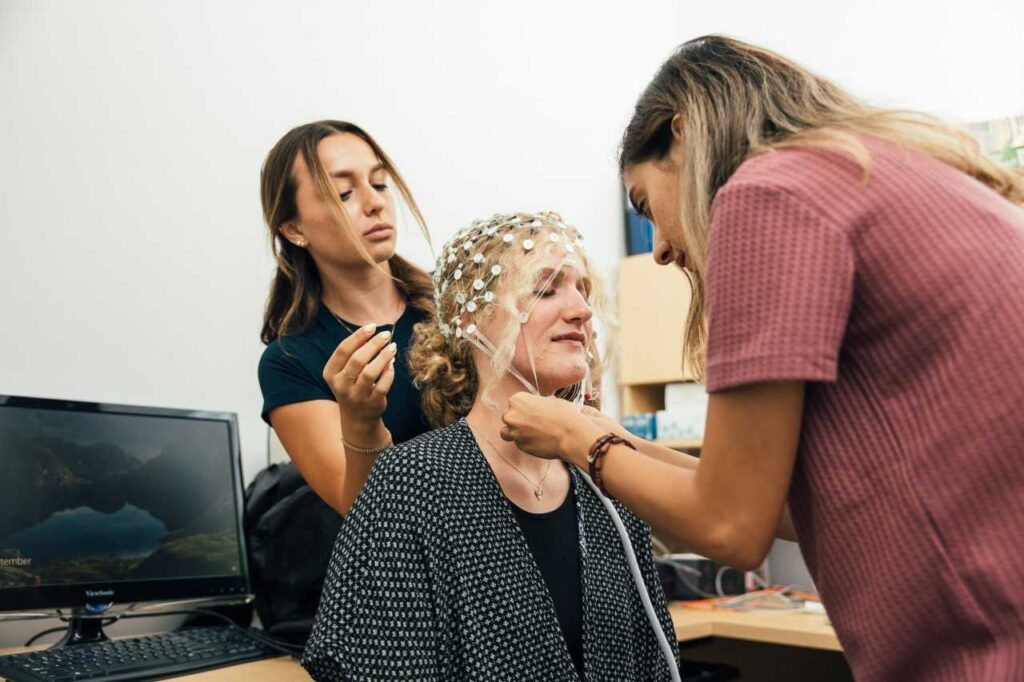Repetitive subconcussive head impacts can lead to subtle neural changes and functional consequences on brain health. However, the assessment of these changes remains limited. New research from DMCBH member Dr. Naznin Virji-Babul’s lab found resting state blink-related oscillations (BROs) may be a useful biomarker for detecting subtle neural changes resulting from repetitive head impacts. The paper was recently published in Frontiers in Human Neuroscience.
We spoke to lead author Sahar Sattari—a MSc student in the Perception-Action Lab to learn more about this study as well as her research interests.

Sahar Sattari
What were the main findings of this paper?
Our paper found that the more often female collegiate soccer players experience head impacts during a season, the more changes we see in certain brainwave patterns. These changes may serve as early warning signs for subtle, yet potentially significant, alterations in brain function.
Why are these findings important?
This research is crucial for several reasons. Firstly, it highlights the potential for early detection of neural changes that may lead to more significant injuries or cognitive issues down the line. Secondly, it lays the groundwork for further studies with larger and more diverse sample sizes. Ultimately, our findings could be instrumental in creating injury prevention protocols, informing rules changes in sports, and enhancing player performance by minimizing neural risks.
What prompted you and your lab to do this study?
Our lab has a long-standing interest in studying mild traumatic brain injuries, particularly those related to sports. While there has been substantial research on the neural changes following concussions, we realized that there is a gap in the literature concerning the effects of subconcussions, or lighter head impacts.
What was involved to carry out this research?
The bulk of the data was initially collected by a former Ph.D. student, Rebecca Kenny. My role primarily involved assisting with further data collection and conducting a comprehensive data analysis. The entire study spanned several months, allowing us to observe the athletes throughout one competitive season.

What are your main research interests?
My main research interests lie in identifying neural biomarkers for early detection of brain trauma and enhancing methodologies to interpret non-invasive data collected from the brain. Specifically, my work has revolved around understanding the subtle neural changes in the brain that may be triggered by mild traumatic injuries or repetitive head impacts in contact sports.
What drew you to neuroscience?
I’m drawn to neuroscience mainly because of my interest in neural data analysis. I believe that emerging technologies and advances in data analytics can provide new insights into the brain’s complexities. My hope is that, as we improve our methods, we can make significant contributions to healthcare and our understanding of human cognition.
What other roles do you have in the lab?
In the lab, my primary role focuses on neural data analysis and bio-signal processing. I am involved in the collection, organization, and analysis of EEG (Electroencephalogram) data.


